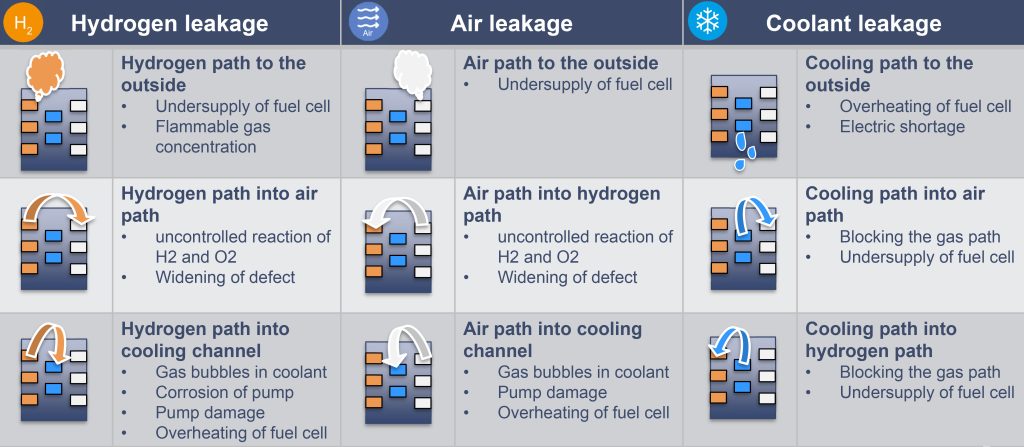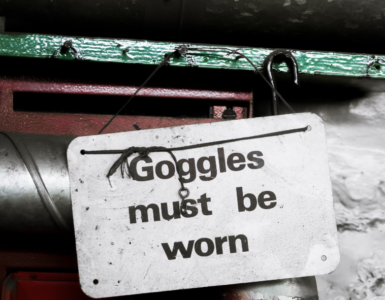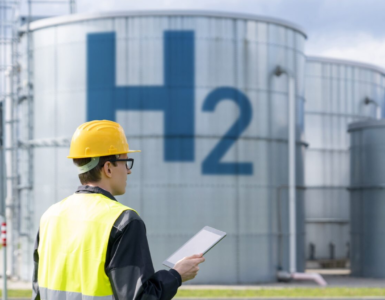No Future for Hydrogen Without Proper Safety Regulations, Future of hydrogen rests on adherence to safety measures – Inficon
Substantial decarbonization is needed to meet the climate goals of the Paris Agreement across all sectors that emit greenhouse gases (GHGs). The transportation sector ranks high on this list and is one of the most difficult ones to decarbonize. Projections show that the amount of GHG reduction needed in the transport industry between 2020 and 2030 is about 40 percent, 80 percent by 2050. With an expected increase in transportation demand in coming years, emission reductions per vehicle will need to increase even further.
Hydrogen-powered fuel-cell electric vehicles (FCEVs) may soon outpace battery electric vehicles (BEVs) in the transport industry’s transition towards a “green” future. The environmentally friendly technology, however, must overcome a number of challenges such as significant cost reductions, increased performance and an appropriate infrastructure. In addition, there are safety and quality concerns, both of which can be addressed through advanced leak detection.
Hydrogen-fueled FCEVs could be crucial building blocks of future mobility
🔥 What about we co-host a webinar? Let's educate, captivate, and convert the hydrogen economy!
Hydrogen Central is the global go-to online magazine for the hydrogen economy, we can help you host impactful webinars that become a global reference on your topic and are an evergreen source of leads. Click here to request more details
Many hopes rest on the future of hydrogen-powered EVs: Hydrogen transportation is a promising option where electrification is more difficult such as public transport buses, commercial fleets or certain parts of the rail network. The use of renewable hydrogen is expected to enable the carbon-neutral transportation of goods and commodities, even for 40-ton vehicles traveling more than 1,000 kilometers (621 miles).
Led by China and Europe, global sales of BEVs and plug-in hybrid electric vehicles (PHEVs) grew 41 percent in 2020 and will continue in future years, according to the International Energy Agency. These vehicles now account for more than six percent of the light-vehicle market globally. Even in the United States, which has lagged behind other regions, BEV production is growing and now accounts for more than three percent of the market.
This trend is expected to accelerate by the end of the decade. Forecasts predict that BEV/PHEVs will account for more than 30 percent of the global market by 2030, as automakers offer more and more electrified models to meet increasingly stringent emissions regulations.
With customers now becoming more receptive to electric cars, automotive companies also are increasingly turning to FCEVs. Selling incentives include longer range, access to cities with low-emission zones, preferential parking and shorter recharging times. Refueling a hydrogen tank takes about the same time as filling a gasoline or diesel tank. The use of smaller batteries also helps reduce weight and could ultimately lower costs compared to BEVs.
These advantages make fuel cells an attractive option, especially for commercial and long-haul vehicles that can return to a common facility at night for refueling. Refueling sites along highways to supply truck fleets will alleviate concerns about the lack of hydrogen refueling stations until a more adequate infrastructure is in place.
Development plans by automakers
Hyundai has announced plans to use fuel cells across its commercial vehicle lineup by 2028. The South Korean company is developing fuel cell-powered vehicles from trucks to tractors and trailer drones. By 2030, the company aims for FCEVs to reach cost parity with BEVs and conventional internal combustion engines. Hyundai expects the hydrogen economy to expand to homes, public transportation and infrastructure by 2040.
Toyota already has tested a number of fuel-cell-based vehicles (including forklifts and even a lunar rover). The company plans to begin manufacturing fuel-cell modules for heavy trucks next year at its plant in Georgetown, Kentucky.
Daimler and Isuzu are planning their own fuel-cell trucks. GM, which has been developing the technology for about 50 years, is working with Navistar on fuel-cell trucks. Start-up companies like Nikola also have started development in collaboration with Bosch.
For a sustainable future, safety barriers must be a priority.
The number of electric cars in Europe is growing rapidly. The low weight and high energy density of hydrogen also offers particular benefits for commercial vehicle operators. Component manufacturers, supplying everything from bipolar plates to hydrogen tanks, however, face new leak-testing requirements for quality assurance.
Safety concerns must be addressed for passenger and commercial vehicles to gain widespread acceptance for alternative fuel vehicles. “Leak testing has been and continues to be one of the most critical quality controls performed by automakers and their suppliers,” says Thomas Parker, North American automotive sales manager at INFICON. “BEVs and FCEVs call for even more precise testing. Because of the flammability of hydrogen, even an extremely small leak can cause a fire.”
The hydrogen technology of fuel-cell vehicles requires its own leak testing requirements for hydrogen tanks and lines, for hydrogen recirculation and for the bipolar plates that will later be assembled into fuel-cell stacks. The stacks can contain up to 400 bipolar plates, each of which must be leak tested as part of a finished module.
Typical fuel-cell failure modes include crossover leaks between anodes and cathodes or leaks at seals, where hydrogen might react with oxygen. Hydrogen also must not be allowed to enter the cooling circuit.

In addition to protecting against hydrogen leaks, Marc Blaufuss, an INFICON application engineer for leak-detection tools, says manufacturers must test and secure potential air and coolant leaks inside and outside of the fuel-cell stack. “Even small leaks can lead to uncontrolled reactions between hydrogen and air inside the bipolar plate, a major problem that can lead to a total failure of the fuel-cell stack.” For all hydrogen-carrying components, similar to Compressed Natural Gas/Liquefied Natural Gas drives, the lowest possible allowable leakage rates (in the range of 10-5 mbar∙ l/s) should be used. For this purpose, testing of tracer gas-based processes will be practically unavoidable.
Quality assurance, leak detection and precise localization are critical in manufacturing environments. Leak dimensions can range from microscopic to largescale. Difficulties arise because the size of the leak can only be determined after the leak itself has been detected, which in turn impacts the choice of leak-detection equipment. While some fuel-cell components can be tested with short cycles in a vacuum chamber, Blaufuss recommends automated leak testing using robotic sniffers for hydrogen tank systems and other partially assembled systems.
The INFICON approach
Thorough leak testing of hydrogen fuel cells is extremely important because of hydrogen’s explosiveness when combined with oxygen.
INFICON is leading provider of leak detection technology for automotive components and systems. With manufacturing facilities in Europe, China and the United States, as well as global sales and service offices, the company is one of the world’s leading developers, producers and suppliers of instruments and devices for leak detection in air conditioning, refrigeration and automotive manufacturing. In its free e-book “E-Mobility: Leak Testing For Electric And Fuel Cell Vehicles”, INFICON discusses in more detail which vehicle components should be tested, which test methods should be used and which leak rates apply for each method.

Conventional methods for monitoring tank pressure fail since even minute temperature fluctuations can have a significant impact. Conventional measuring devices have limits. INFICON’s sensor- and spectrometer-based technology is recommended for handling hydrogen.
Battery-powered electric vehicles produce the lowest lifecycle GHG emissions compared to other technologies. In addition, lifecycle GHG emissions from these vehicles will continue to decline as electricity becomes more carbon-constrained in coming years. Hybrids and plug-in hybrids may offer short-term benefits, but they do not have the capacity to achieve long-term decarbonization improvements. There is no road to comprehensive decarbonization of internal combustion engine vehicles within the frame of the Paris Agreement. FCEVs, however, have the unique potential to achieve extremely low greenhouse gas emissions for passenger vehicles, making them a leading alternative to conventional internal combustion engines. In 2020, the global fuel-cell market is estimated at $4.1 billion and is expected to grow at a compound annual growth rate of 23.2 percent from 2020 to 2028.
“Advanced leak testing equipment with high sensitivity will ensure that electrical systems and hydrogen-related components function as intended, which in turn will boost consumer confidence in BEVs and FCEVs and drive growth in the coming years,” INFICON’s Parker concludes.
Quality-control leak-detection training for fuel-cell and electric-vehicle components also is available through the INFICON Webinar Program, which offers free, interactive instruction on basic tracer gas leak-detection methods and provides information on a wide variety of industrial applications.
READ the latest news shaping the hydrogen market at Hydrogen Central








